Stroom Invest interviews / curator Margarita Osipian
Margarita Osipian is a curator, writer, editor, programmer, and organizer with a responsive approach, examining the intersections between technology, art, and design. Over the course of our conversation, Osipian enthusiastically outlined her interest in cultural organizing and her relationship with productivity in #coronatimes.

Cathleen Owens: I noticed you don’t have a background in art history but media studies. Could you speak a bit about how that has informed your practice?
Margarita Osipian: I have more of an academic background. I was on this path towards possibly becoming a professor. I did an MA in English literature in Canada. Before that, I studied rhetoric and women’s studies. Back then it was called women’s studies, and now you would call it gender studies. After that, I did another two year research MA in media studies at the University of Amsterdam, which is how I wound up here eleven years ago. There, I focused my thesis on visual culture and the carceral state, mainly focusing on the US in terms of how the prison system and the system of incarceration functions there but also understanding it through the lens of visual culture. My background is in media theory and a bit of philosophy and rhetoric and gender theory.

Image: Philip Ullman
How would you define your current practice?
I have this multi-hyphenate thing going on. Curator/writer/editor/programmer/organizer. Right now, I would say I’m an independent curator because I don’t work for anyone. I’m also a writer and I work as an editor and I do cultural programming. I still focus mostly on digital culture or artists who are using digital technologies in their work or those who are responding to our current moment. A lot of my work does intersect with that but I do a few projects which are outside of that space. When I have to talk about myself, sometimes I mention that I come from a social work/activist background, which informs my approach to the curatorial work that I do. I’m not necessarily the kind of curator that tries to link back to a specific historical moment or create a trace through. I think it can be valuable but for myself, that’s just not the way that I work. It’s often within the context of a specific situation that is going on, or a specific idea that I’m trying to untangle or from a request from somebody to make an exhibition in relation to X, Y or Z. It’s a very responsive practice.
How do you prioritize or create boundaries in these different roles?
People have a need to define each other. It’s hard. It’s especially hard when I’m writing a bio, and trying to describe myself and the work I do and on one hand, it’s really important so that people can understand where I’m coming from. But, I find it really difficult for myself because I’m working on a lot of different initiatives and with many of them, I’m part of the organizational structure. I’m in various roles with Versal, with Hackers & Designers, with The Hmm. These roles can look pretty different from each other. With The Hmm and Hackers & Designers, there is overlap because The Hmm is interested in internet cultures and Hackers & Designers is all about bringing artists and designers together with programmers and coders and hackers in order to share skills and work together in hands-on ways. So thematically, there is overlap. But then with Versal, it’s a whole other thing with art and literature. We have readings and we show films and we make food sometimes so it has a different space. I try not to create too many boundaries but I try to be careful that they don’t all mush into each other.
Especially as a freelancer, I think it’s learning to say no to things, which I still find difficult to do. If I think something is cool, then I often enthusiastically jump at it. Now I have the privilege to say no to things that I would really hate doing, that I probably would have said yes to before. For example, copywriting for businesses. That is so dreadful.
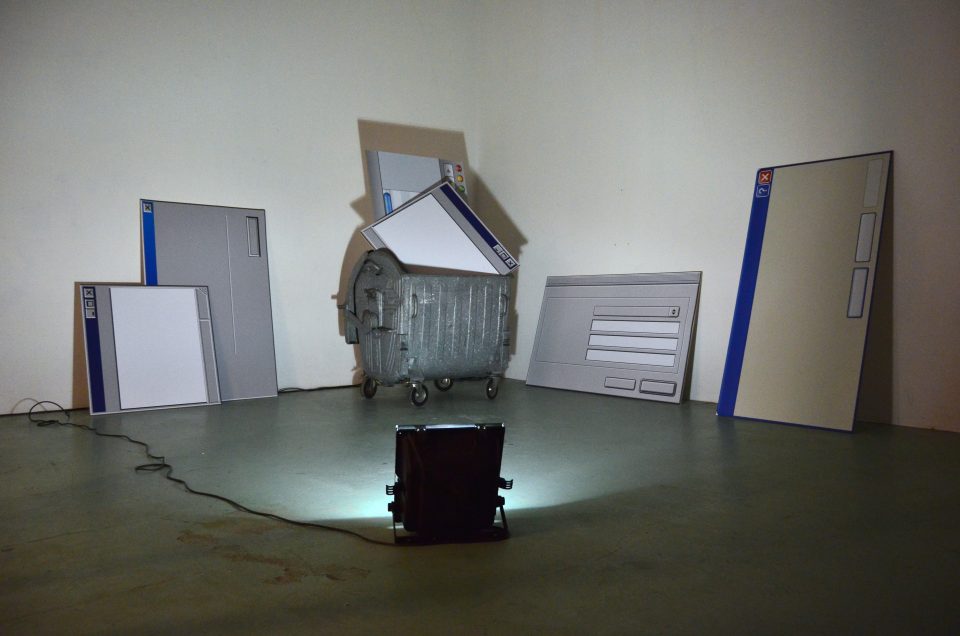
Image: Milan Anais
You’ve been busy during this quarantine, holding experimental events with The Hmm, organizing a radio program with Petra Heck surrounding the power of doing nothing, as well as hosting the Solidarity Sessions with W139 and Platform BK. How have you experienced your own productivity during this time?
Like a lot of people at the beginning, I found it difficult to focus. That’s an issue for me all the time anyway, but especially the last couple months. We funnel everything through our computer screens and then we have our work there, along with our entertainment, and social life. I couldn’t focus on long-term projects and found it easier to tackle these really short-term things that were coming up right away. There was extra time because the whole social aspect of being in the cultural world disappeared. There was more time at night because you didn’t have to go to an opening or a lecture but you could watch something from home. So there was a bit of extra space but to be honest, I did have a dip. I was really trying to respect that and give myself some space as I needed it, to mentally think through everything. Now it’s even more complicated to think about what the important things are to be working on right now because of all the protests and everything that is coming up. I know that I am in a position to doubt, to feel torn about the way I give meaning to my life and how I am committed. I was talking about this during the radio show with Ja Ja Ja Nee Nee Nee. There’s this overlap from the quarantine period which we are still in, and then this massive civil rights movement that’s happening. It feels like, is this world of art and culture, doing enough? Or do I just want to go make soup for people and is that more important? You have this guilt trip. Should we really be working on art?
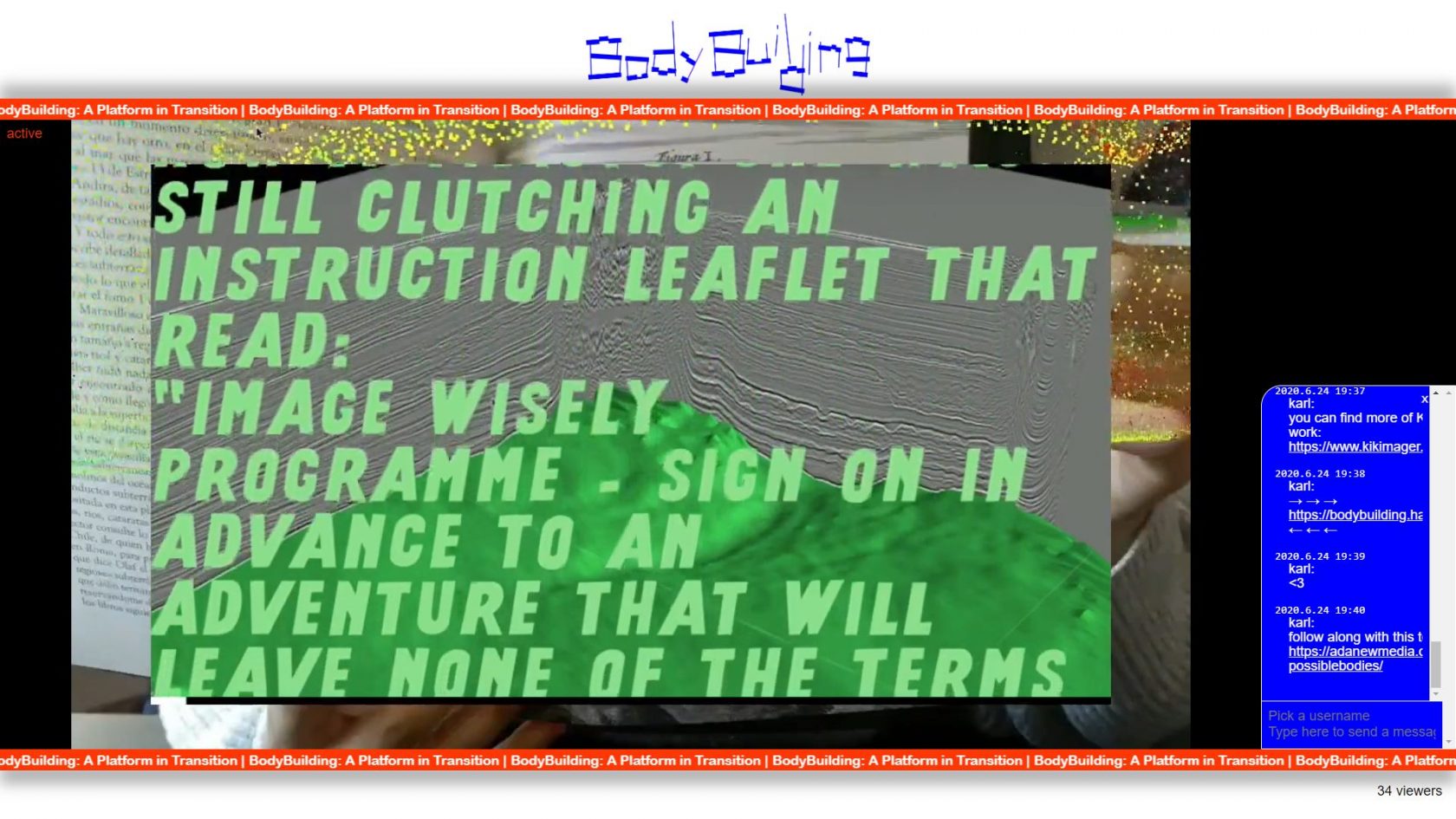
Image: Ella Buzo
How does accessibility play a role in your work? And how much importance do you place on it?
I don’t work on projects that have a huge reach. Everything is on a smaller scale. Personally, I really like that. I’ve done stuff where there’s just ten or twelve people who show up and that’s totally fine. On that smaller scale, you can still try to reach different audiences.
Thinking about accessibility, I have some struggles with the language we use in the culture sector in terms of it being, at times, extremely academic. Because I come from an academic background, I have a tendency to write like that. I can see that in certain contexts this way of using language has a tendency to alienate people, or make it difficult for them to understand a specific artwork or its conceptual framing. There is a bit of this tension. But I don’t have an answer to it because I go back and forth quite a lot on this question.
I started thinking again about this idea about accessibility surrounding language and how we use it during an exhibition that Anja Groten and I curated, as part of Hackers & Designers, at Tetem. One of the works in the show was from The Underground Division, which is a collective comprised of Helen Pritchard, Femke Snelting and Jara Rocha. They often have quite a dense way of speaking and it can feel very academic. They create their own words and make these amalgamations of words, which is a very valuable feminist practice when we think about the history of language, but it can also feel inaccessible at times. During the opening, we were talking about the fact that they are often asked to simplify what they’re talking about or make it easier to understand and they usually refuse. They really stand by the language that they use and don’t alter it or change it but give people the space to understand it in their own way. We got into a good conversation about how we have very specific ideas about what it means to understand something, that it means that you get it completely. But understanding things functions in different ways. Maybe you don’t fully understand the idea behind it but you have some concept of it or maybe you just get a feeling from seeing the work. It also changed my opinion back in another direction. I did really appreciate their ideas surrounding that. I also know that in these instances of where there’s a really academic language that’s being used, sometimes those words are being used because there are no other words that are able to be used to describe it. And sometimes the words are being used to sound really smart. Can this text be easier or can we explain some of these concepts that are being used? I think it’s good to check ourselves on that. The other thing is “Is the work interesting without the academic text attached to it?” That’s an important question that I think about myself when I see artwork. Can the work exist without text and can it still give something, give another form of understanding without having this text that contextualizes it?
With the Solidarity Sessions, it felt really refreshing. At the time, I was coming across a lot of very critical analysis of the situation and very philosophical readings of what’s going on. There were people who were already trying to philosophize or contextualize this situation we were in, with the pandemic and lockdown. I couldn’t get into this way of thinking. There were friends of mine who lost all of their income.
The reason I wanted to hold the Solidarity Sessions was because of the situation of the Tozo for non-EU citizens. There were people who applied and didn’t even know that it could put their visa status in jeopardy. That was the trigger for me. I reached out to W139 and Platform BK to see if they would organize something together with me. I thought it was important to have a super practical session with lawyers, professionals, and advocates, for people to ask concrete questions.
To me, that felt right at the time. I didn’t want to philosophize about the situation but be super practical. Where can people get help? What rights do they have? It’s about the cultural world but without a curatorial concept. It’s concrete. It felt good to do something where there are answers to things. As of right now, over 800 people have viewed the recording of the first edition of the Solidarity Sessions.
There’s a very basic, but important, idea that the more knowledge you have about your situation, the more empowered you start to feel. At least in my own case, my Dutch is really crappy, which is my own fault. I pay attention to the news but more to international coverage or to coverage in the US, where I’m not even from. It was very interesting to get a better understanding of how we advocate for change in the Netherlands, especially at this time. It was really fascinating to see how the Tozo problem was brought up. It was such a complex process, which I was able to follow because of lawyer Jeremy Bierbach’s amazing updates. It felt really empowering to know that some things can move quickly if there is enough pressure and urgency.
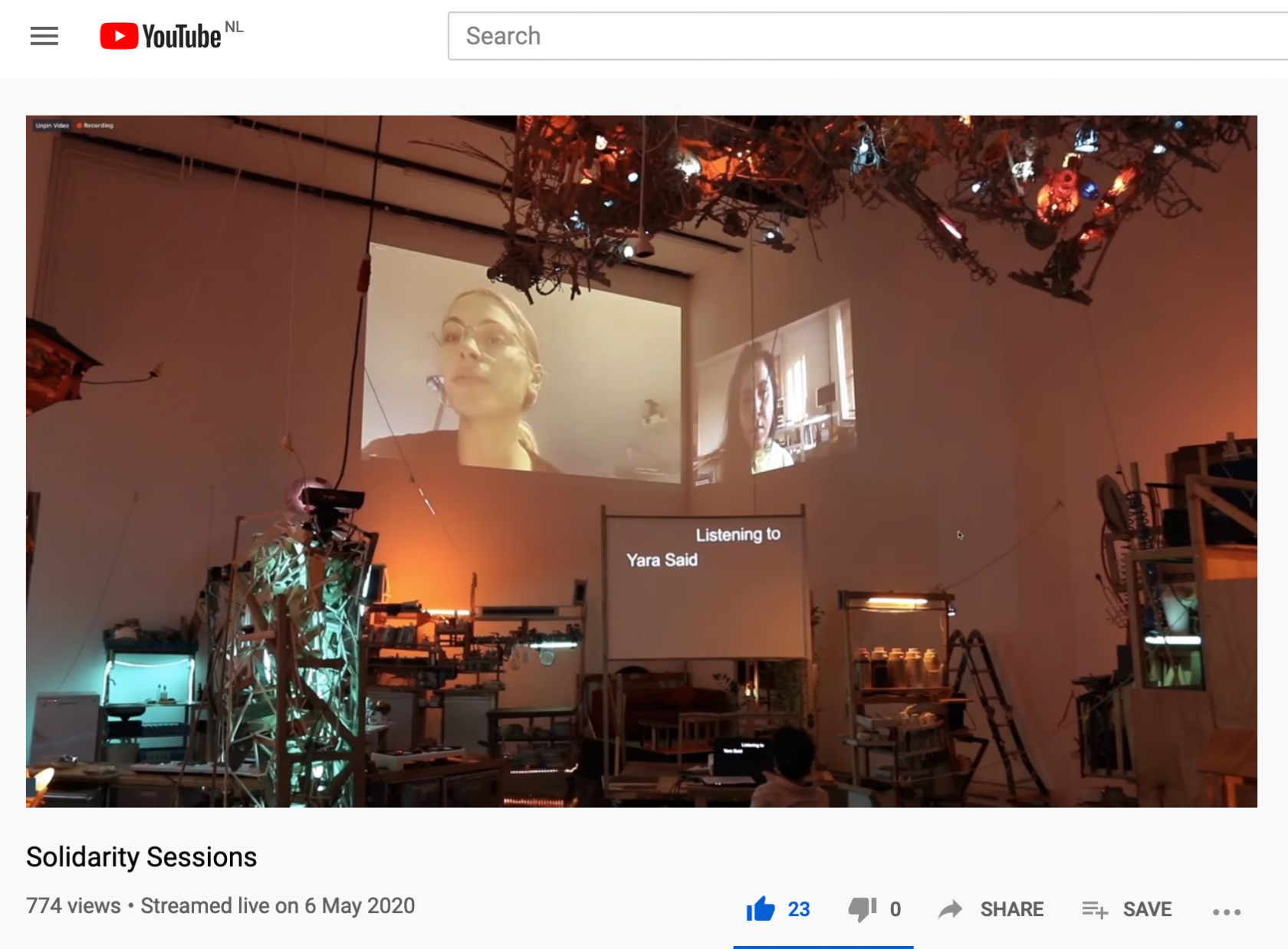
What do you think of the casual use of the word ‘curate’ in the present? For example, curating an Instagram profile, or in a branding, advertising context.
It’s funny because I think the word has lost so much of its original meaning. It’s been co-opted by capitalist systems and the market. One of my really good friends was working for a really small gallery and she was asked to curate the cheese plate.
Ouch. That’s so painful.
People often use ‘curate’ as a fancy way of saying ‘choose’. And of course there are many elements of ‘choosing’ in the act of curation, but I like to remember the etymology of ‘curate’ which is about being the guardian of something, to be attentive to it, to take care of it. I think care and maintenance are very important to my work. I actually see the work that I do as organizing. I think it’s maybe because I’ve always worked on a small scale. We’ve had to do all the labor ourselves, the communication, the PR, the production, the project management. I’ve never been in a position where I’ve come up with a concept and then given a bunch of names and somebody else does all the logistics, all the other stuff. The idea is the beginning of it and then you have a concept and then you choose artists or writers, researchers, whatever, that are responding in some way or giving their own perspective, their own point of entry, into that idea. That’s five percent of the work and the rest of the work is actually making it into something tangible. That’s the really un-sexy work, but the utterly important and invisibilized work of maintenance and care.
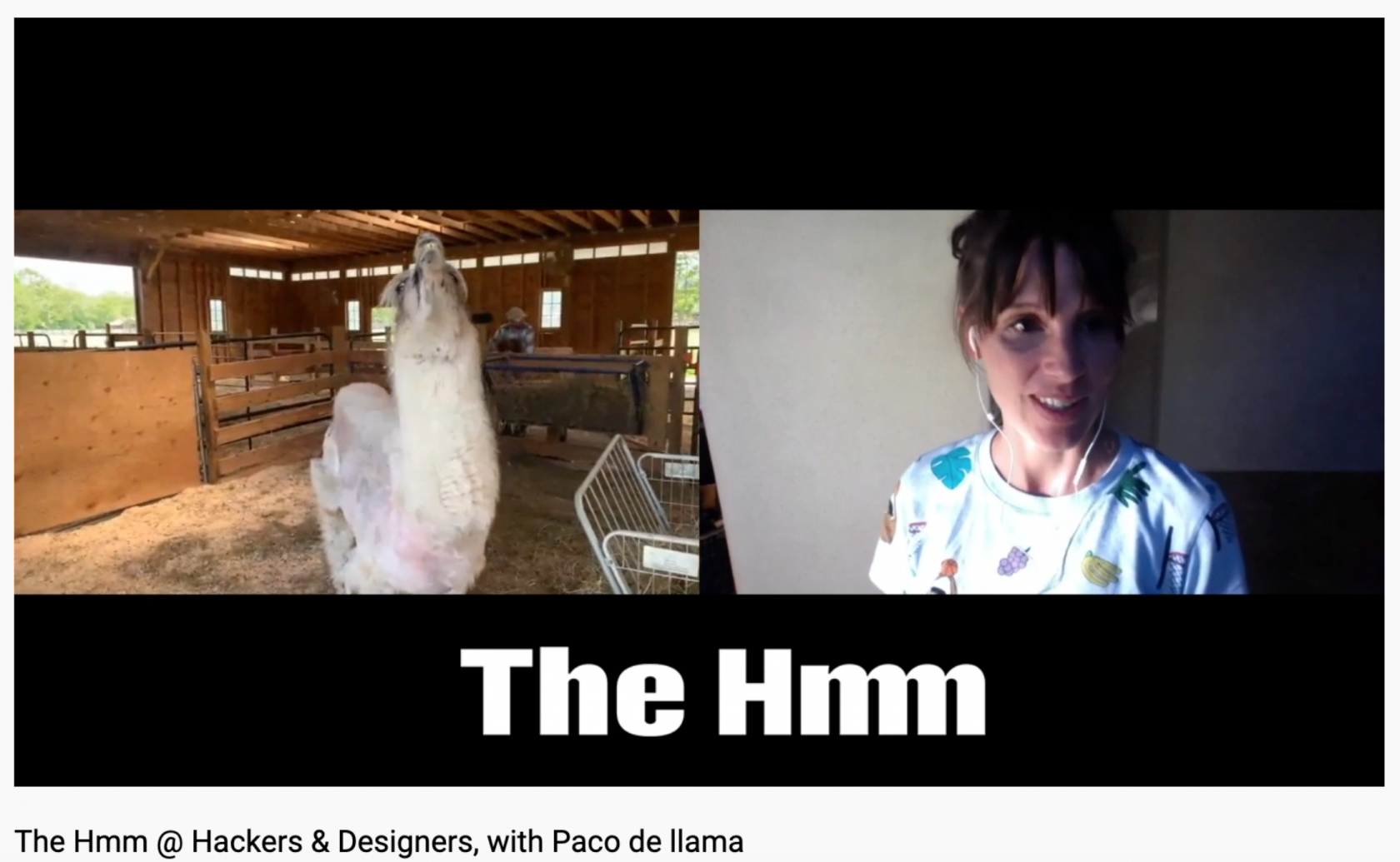
Are you optimistic about the idea that artwork can affect social, political, cultural change?
Yes, even though I still have my own personal doubts. I don’t think that an artwork existing on its own or an artist by themselves, can really cause a major change. But when all of these things are taken together, then we can have some kind of impact. You see a lot of examples where things are aestheticized, rather than actually being dealt with. For artists who have a very socially engaged artistic practice, it can get dangerous because you run into this territory where the artist speaks for the group of people they’re supposed to be representing, domestic workers for example, and then the artist centers that conversation around themselves, rather than the people that they are supposed to be helping.
In that case, I think we should just be doing social work or community organizing or organizing in a different kind of way, without it being centered around one person. And usually that’s a person that isn’t even directly impacted by said issue. I also have a hard time with people talking about care or solidarity or resistance but when it actually comes to how people are behaving with one another or how institutions are structured or functioning then those ideas aren’t actually reflected. You see on a structural level how a lot of places are really failing. We see it in the movements to decolonize museums and also these pushes for “diversity”, which is such a horrible word, in the culture world. Institutions can talk a certain talk. I mean, it’s pretty easy to talk about the importance of these ideas. But when it comes to actually changing the structures that have been in place for ages, that’s where things end up at a bit of a standstill.
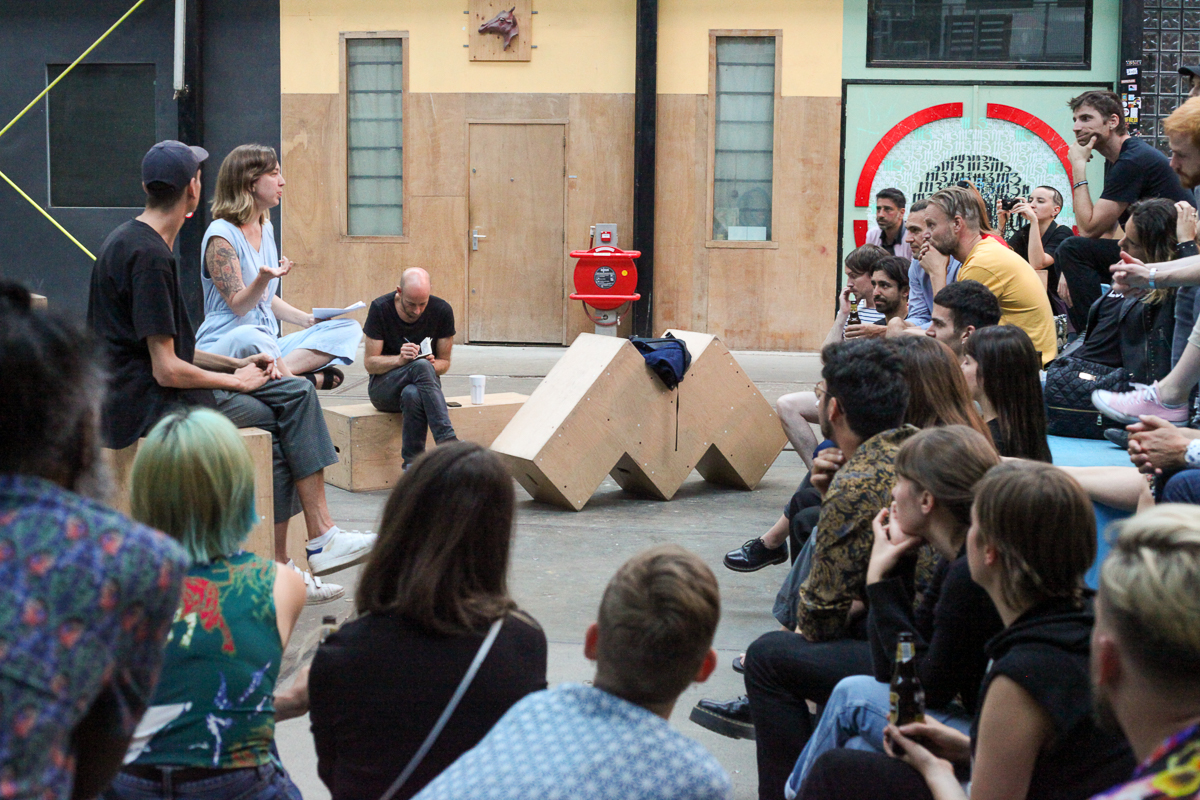
Image: Philip Ullman
What are you reading right now?
I just started reading this book called M Archive: After the End of the World by Alexis Pauline Gumbs. Every page is its own text. The stories have an excavation quality. I’m not super far into it but it’s as if someone has come in, a future researcher and they uncover these pieces of evidence of the conditions of our past world and they uncover these pieces of evidence of the conditions of our past world—capitalism, environmental crises, racism. It’s really beautiful and every page is referencing back to pieces from Black feminist theorist M Jacqui Alexander’s work so it’s very interwoven.
I have to be honest, I’m finding it hard to read lately. Sometimes I’ll read bits and pieces. I saw this graph about how we mentally adjust to these kinds of situations and how it’s normal that we’re not able to do this deeper level thinking. I think I was drawn to reading this book right now because it’s these little pieces so you can quickly jump into it and read a few lines and then jump out of it. I was told that it is also meant to be read as an oracle, so you can ask a question and then turn to a random page to get advice.
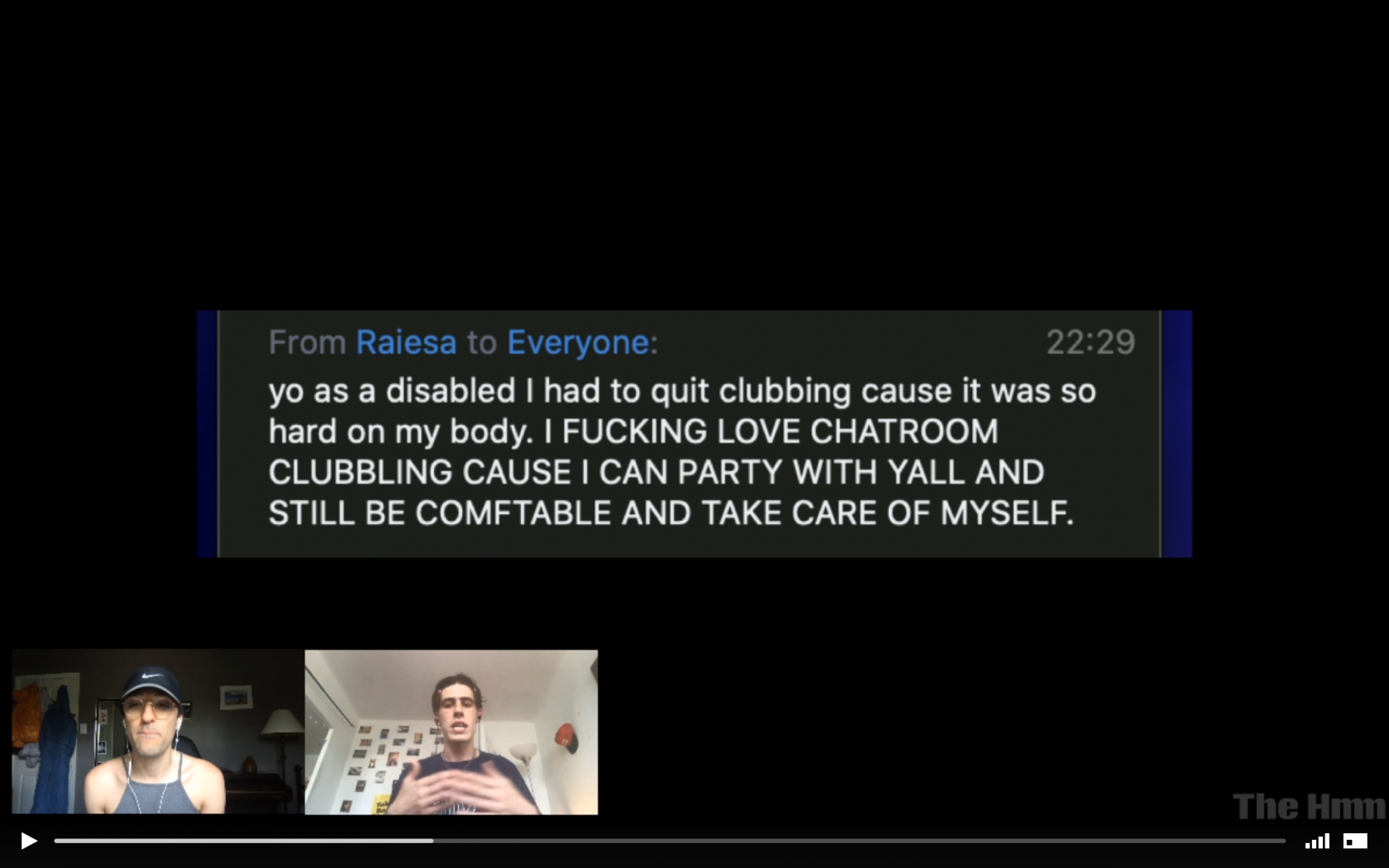
Could you talk about the importance of the structures/methods of presentation you are using?
For an upcoming event with The Hmm, we built a platform to livestream from, together with Hackers & Designers. We’re going to replicate this platform on The Hmm website so we can livestream through there. That’s important to me, to really think about the structures we are using to do the work that we’re doing and if they are undermining the ideas that we’re trying to conceptualize or theorize. With The Hmm, we are critical about big tech and privacy violations so it’s relevant for us to not be using these big platforms ourselves. That’s a really nice example of taking your value system or the concepts that you’re sharing and really applying them to the structure of what you’re doing.
If you’re critical of big tech but then you’re using Zoom or YouTube, you’re also sending a message. It wasn’t even that crazy for us to build this platform. The one thing we didn’t do, which is really difficult to do, is run all the video servers ourselves. That takes the most energy and that’s something that would have been a really, really, really, really expensive and hard for us to do and maybe not actually efficient or good for the environment, as Andre, one of the members of Hackers & Designers, pointed out. You asked earlier about accessibility. Is this then accessible? What kind of tools are we using? What kind of systems are we using? If you are going to be critical about our current situation, whether it’s about politics, or about racial inequality or systemic racism, or about gender issues then it’s crucial to think about what kind of structure I’m creating for the programming that I’m doing. I try as much as possible to really think about that in my work, the space I’m creating for people. Do people feel comfortable to speak and share? Do we want to serve food or drinks? How are people sitting? These are really important questions to ask. For myself and for the work that I do, it’s imperative to really acknowledge the structures we create. And then, we should try to challenge and change them, so that they fit in with what we’re actually talking about, instead of having a one-size-fits-all approach.
The Invest Week is an annual 4-day program for artists who were granted the PRO Invest subsidy. This subsidy supports young artists based in The Hague in the development of their artistic practice and is aimed to keep artists and graduates of the art academy in the city of The Hague. In order to give the artists an extra incentive, Stroom organizes this week that consists of a public evening of talks, a program of studio visits, presentations and a number of informal meetings. The intent is to broaden the visibility of artists from The Hague through future exhibitions, presentations and exchange programs. The Invest Week 2020 will take place from 21 to 25 of September.